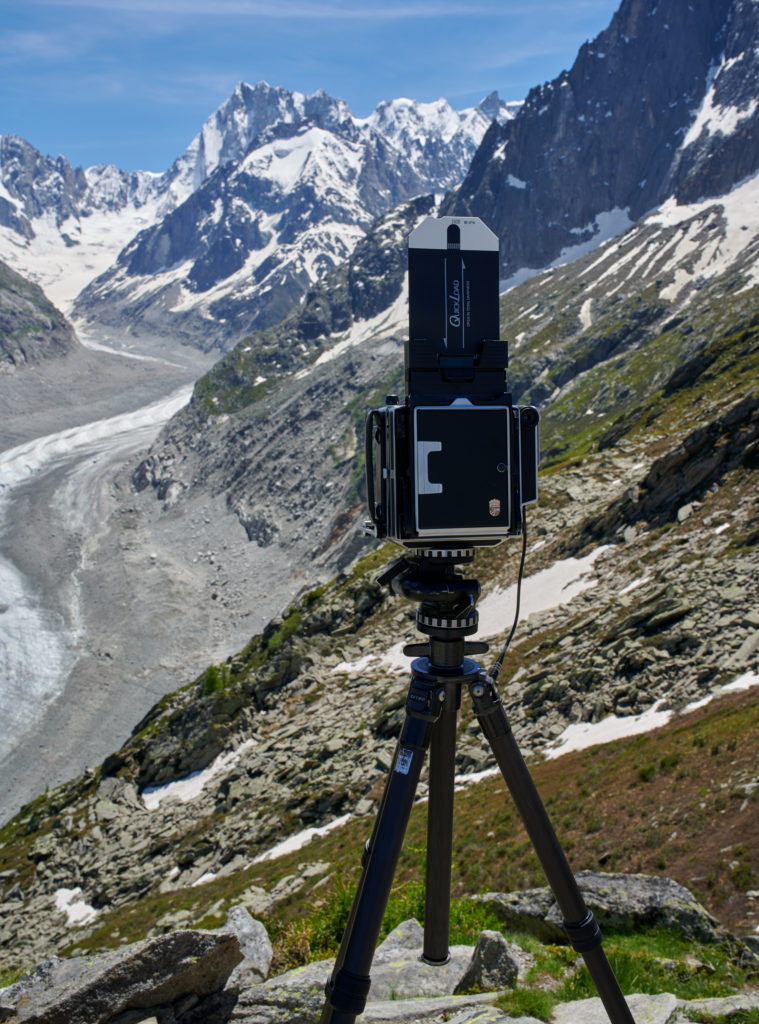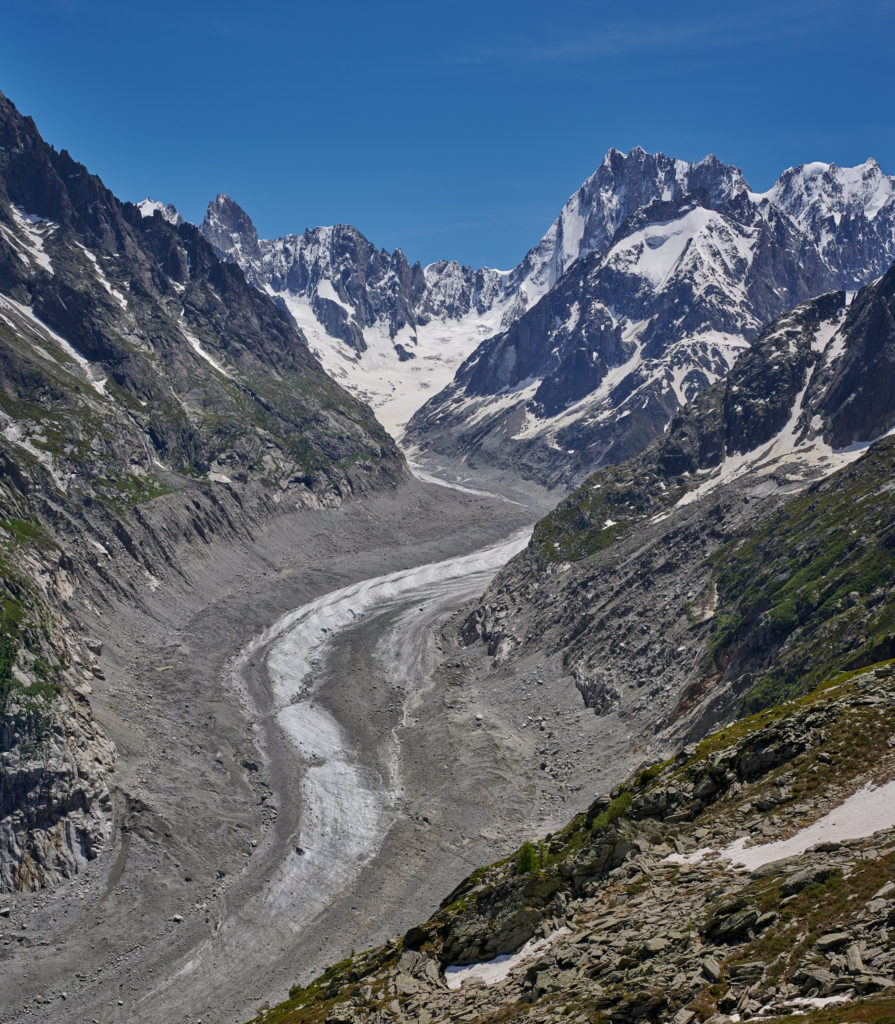
On a view camera a sheet of film must be loaded into a holder. This can be done in the complete darkness of a proper dark-room, in some odd, windowless hotel bathroom, or using a film-changing tent. After the camera has been set up and focused, the holder is inserted into the camera, the dark slide removed from the holder, and the exposure is made. The dark slide is then reinserted, and the film holder removed from the camera.
The standard (Riteway, Fidelity, and Toyo, among others) film holders hold two sheets, one on each side of the pressure plate. The Grafmatic holders held six individual sheets, but they were unreliable. Consequently, one has/had to carry multiple film holders, extra sheet film, the changing tent, and an empty box to store the exposed film. This nuisance kept me away from the view camera for some time.
But when in the early 1990s, 4×5-inch films were made available in single-shot, pre-loaded envelopes (named Readyload by Kodak and Quickload by Fujifilm ) I was sold. I bought a used Linhof Technika with a set of Schneider and Rodenstock lenses. I was sure to obtain the best image quality at the time, short of 8×10-inch or larger systems prohibitive for airline travel or on locations requiring hiking.
In addition to eliminating problems of dust, scratches, and fingerprints, the daylight-loading systems (aka Quickload) reduced the amount of gear to be carried because different film emulsions could be shot using a single film holder without the risk of double exposure. Moreover, the envelopes of the sheet film could be marked for the subject and receive individual processing by about +- one stop. I always took two shots of a scene with the same composition, focus, and exposure. I had them developed in two batches, which yielded a backup for exposure errors. The price per sheet of film was some 40% higher than that of conventionally boxed film though.
Kodak’s Readyload system died in 2008 when Polaroid went out of business, as they were packaging it for Kodak. In the same year, the Fujifilm Quickload film holder was discontinued, which was the writing on the wall for the suppression of Quickload film a year after. Fortunately, the Kodak holder also worked with the Fuji Quickload envelopes. In 2009, I bought a fridge worth of Quickload from refrigerated or outdated stock. By now, that stock has depleted, and I ended up with the last six sheets of Fujichrome 160 S color negative film.
To pay homage to a past epoch, I went to Chamonix to photograph the “Mer de Glace,” which may soon belong to bygone times.

Not having used the camera for quite a while, it felt almost like a spiritual practice, being questioned by the onlookers. It was also a pleasure to compose for the 4×5 aspect ratio. For me, the 24×36 is not wide enough for landscape orientation, while it is too wide for portrait orientation.
Now, there remains the challenge of where I can get my film developed, as all the labs in Geneva, running E-6 and C-41 processes on sheet film, have shut down their services. There’s a lot to be said for instant gratification. As the tripod was set up, I shot the same image with the Nikon Z7 and the 24-70 f/2.8 Z at 45 mm with stitch and crop of three horizontal images to match the 4×5 aspect ratio.
SR